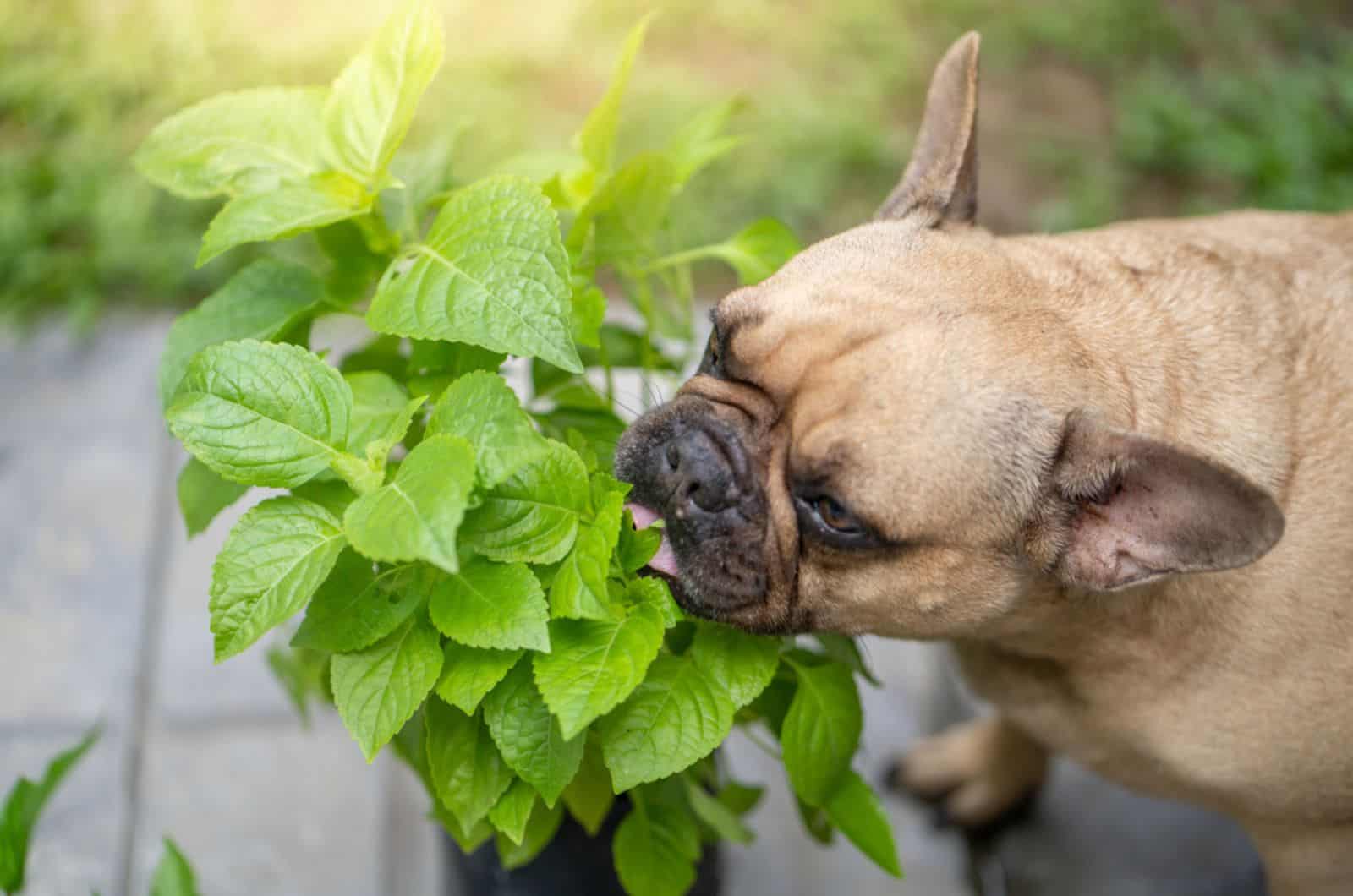Every year, thousands of dogs are accidentally poisoned by plants. And unfortunately, some of the plants poisonous to dogs can cause serious harm before we even realize they have ingested them.
But don’t worry, fellow dog lovers! With a little knowledge, research, and precaution, we can keep our pups safe and healthy.
There are many non-dog-friendly plants that are all over the place.
In this guide, we’ll explore some of the most common plants poisonous to dogs and what symptoms to look out for if your pooch has ingested them.
1. Aloe Vera
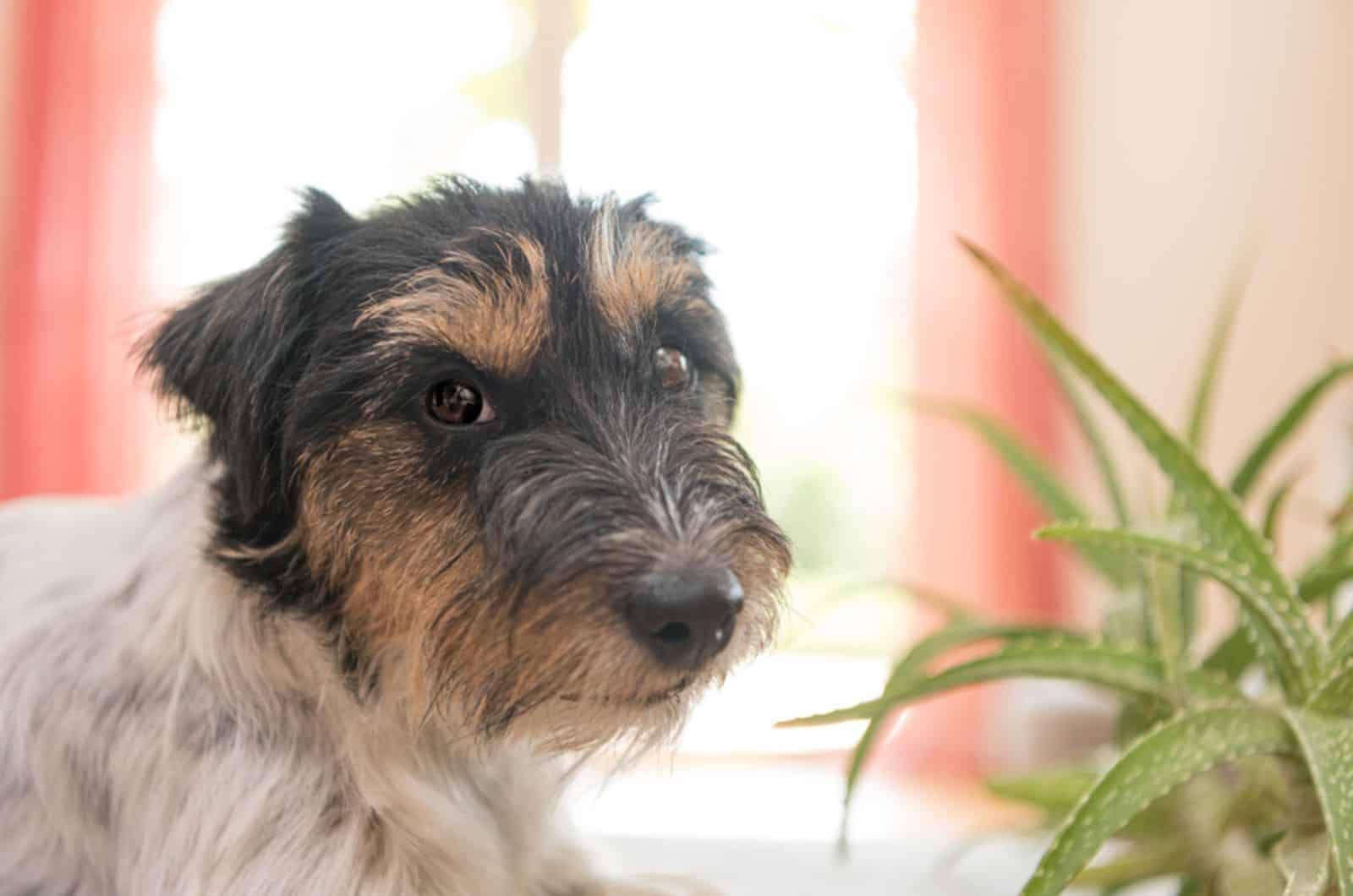
Toxic components: saponins, aloin, and anthraquinones
This plant contains a compound called saponin, which can cause quite the ruckus in dogs if ingested in large amounts. (1)
And if that’s not enough, aloe vera also has anthraquinones and aloin that can cause vomiting and watery diarrhea that can be especially dangerous.
This is why I do not recommend that you put topical aloe vera gel on dog’s that have scabs on skin. They will most likely try to lick it.
2. Any Sketchy Mushroom
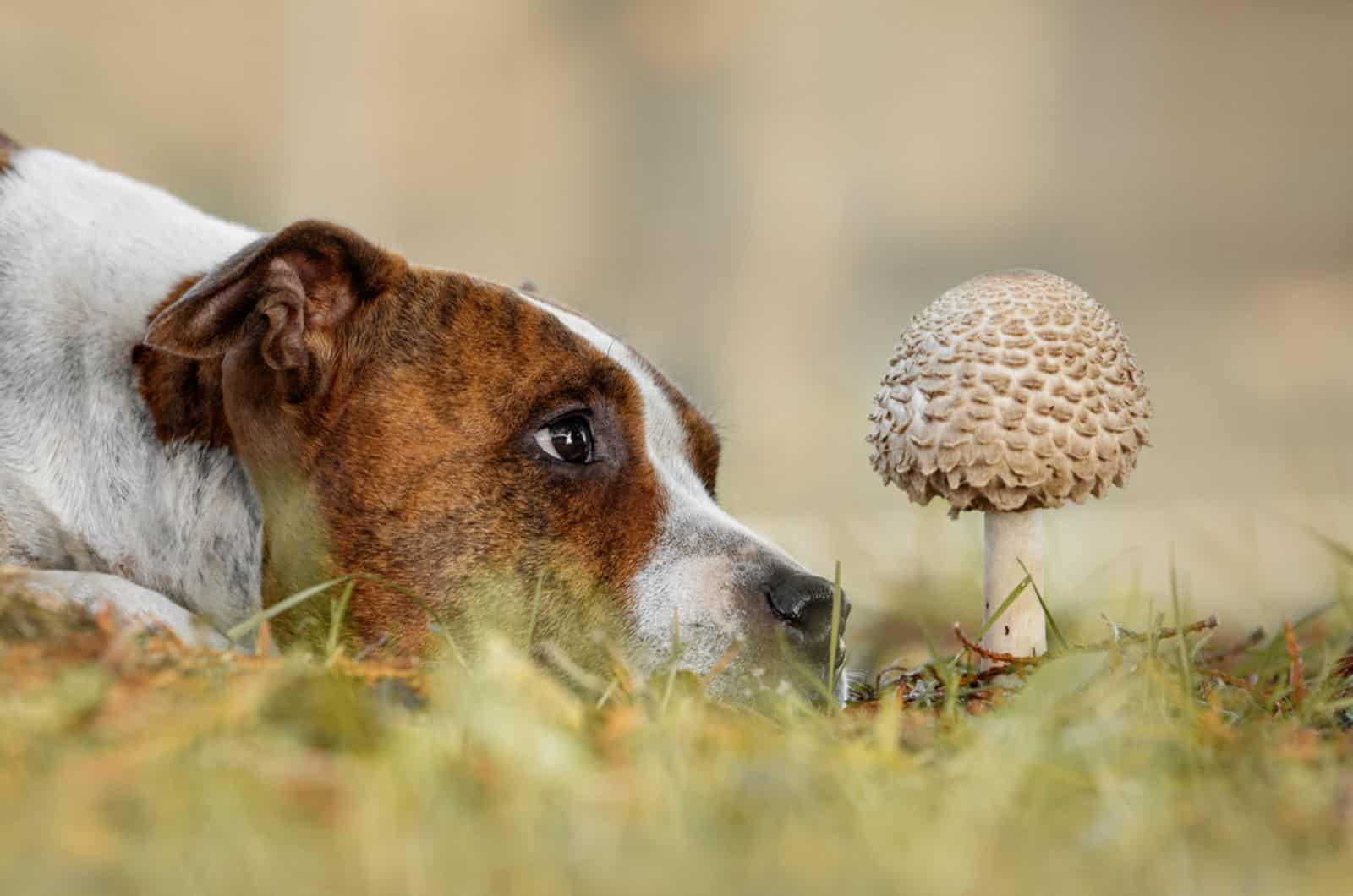
Toxic components: amatoxins, orellanus, muscarine, ibotenic acid, psilocybin, and coprine
Just like in humans, canine mushroom poisoning can put them in a life-threatening condition. (2)
Dogs that spend a lot of time in the wilderness are more likely to unknowingly ingest toxic mushrooms that can cause extreme disorientation, severe diarrhea, vomiting, and even seizures.
3. Azaleas (Rhododendron)

Toxic components: grayanotoxin
Rhododendron plants contain grayanotoxin (GTX) which is a neurotoxin that can put your pup into some serious issues like respiratory distress, hypotension, and complete atrioventricular block.
Grayanotoxin intoxication (3) symptoms include:
- Upset stomach
- Muscle paralysis
- Abnormal heart rhythm (arrhythmia)
- Vomiting
It is worth noting that severe GTX intoxications are pretty rare in dogs, but they can still occur. It is best to avoid this plant overall.
4. Bracken Fern And Emerald Fern (Pteridium Aquilinum And Asparagus Densiflorus)
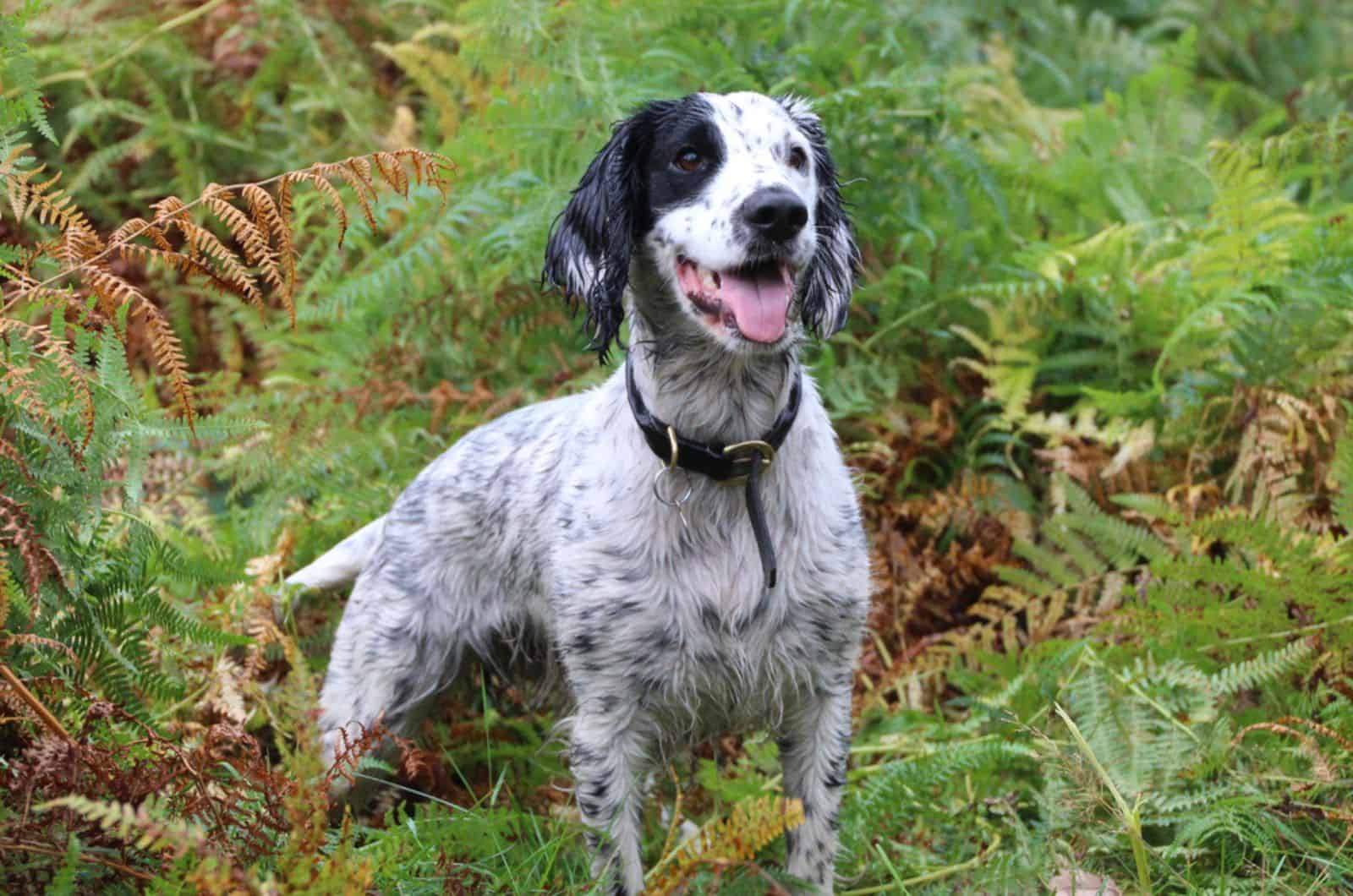
Toxic components: sapogenins
Not all types of fern are bad for dogs, but Bracken fern is definitely the bad guy.
If ingested repeatedly, frequently, and in large amounts, the fern’s toxic compounds can cause your dog to have frequent vomiting episodes, skin dryness and inflammation, change in stool color and consistency, as well as painful abdomen.
5. Castor Bean Or Castor Oil Plant (Ricinus Communis)
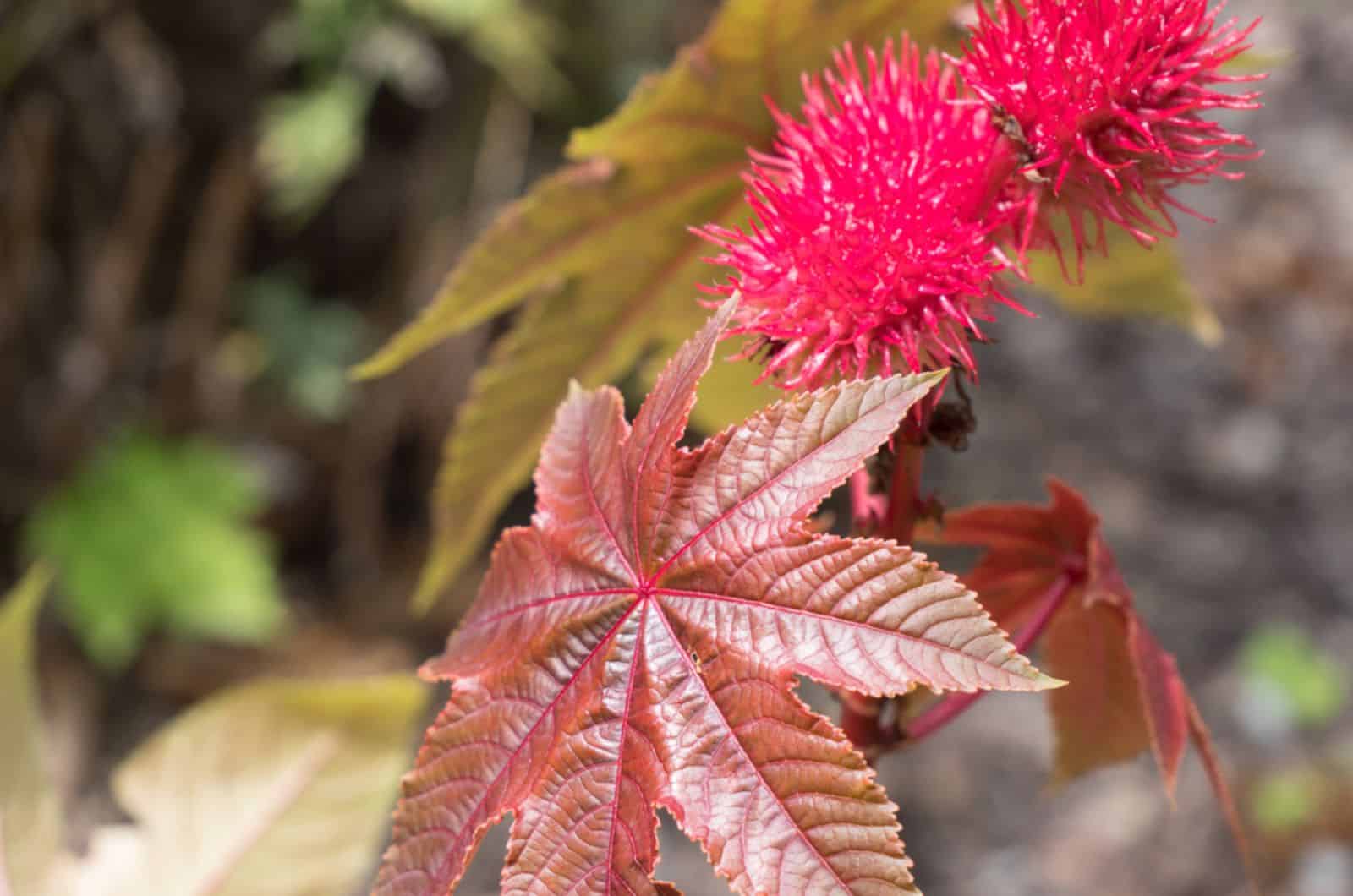
Toxic components: ricin
Castor bean plant (Ricinus oil) may be beneficial for our skin and hair, but your dog won’t have a good time after ingesting it.
Some castor bean plant poisoning in dogs symptoms include:
- Bloody diarrhea
- Abdominal pain
- Collapse
- Inflammation of oral cavity
- Lethargy
- Hypotension
In fact, the toxic component here isn’t the plant itself, but it is the seeds.
They contain ricin, which is a toxin that gets inside the dog’s cells and prevents them from producing much-needed proteins.
6. Citrus Plants (Rutaceae Family)
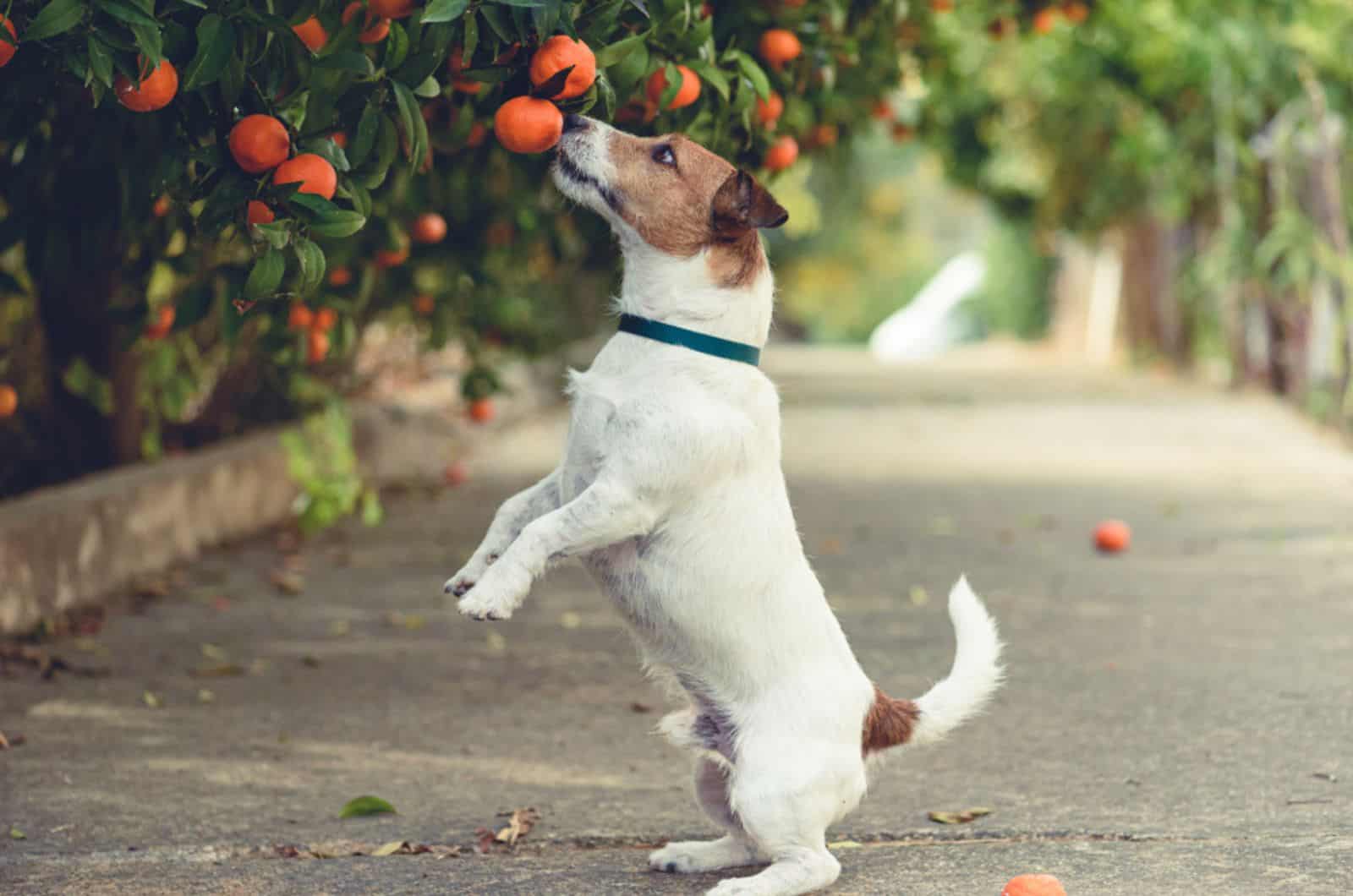
Toxic components: psoralen
Citric acid is a perfect recipe for disaster. It causes gastroenteritis that leads to vomiting, and loss of appetite.
All parts of citrus fruit (leaves, stems, seeds, fleshy part, peels) contain toxic compounds.
So, no, your dog can not eat any citrus fruit safely. In case he eats a whole lemon or a bunch of lemon peels, take him to the vet immediately!
7. Cyclamen (Cyclamen Spp.)

Toxic components: triterpenoid saponins
The most dangerous parts of cyclamen plants are the roots. If your pup chews on this plant, it will produce crystals that will cause stingy sensations inside his mouth.
Chewing this plant will lead to excessive drooling, and gagging without throwing up. If ingested, your dog may exhibit profuse diarrhea and vomiting.
8. Dumbcane (Dieffenbachia)
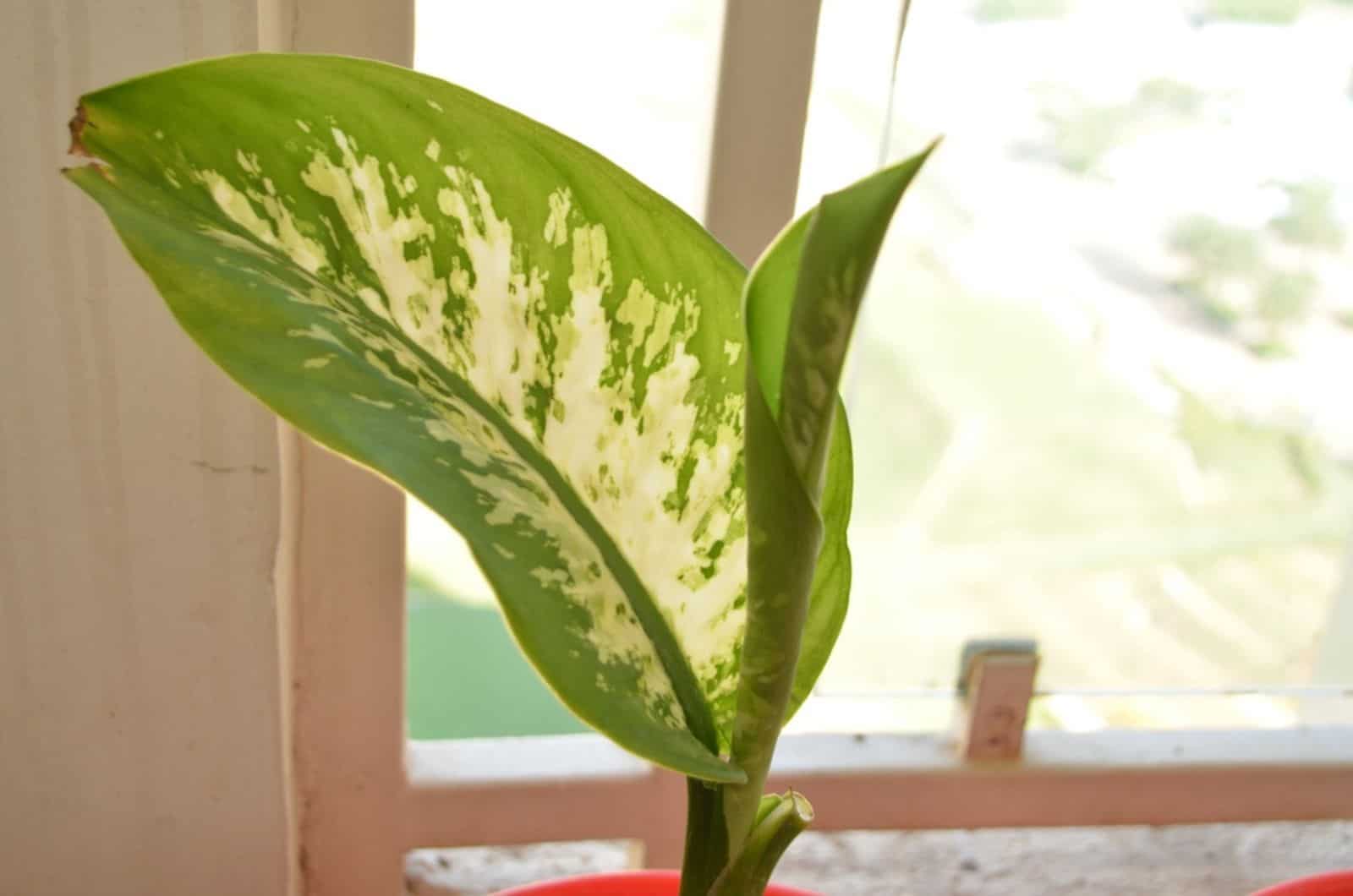
Toxic components: calcium oxalate, oxalic acid, proteolytic enzyme
The calcium oxalate crystals are incredibly irritating to the mouth and throat of our pups.
If a curious pup decides to take a nibble on Dumbcane, they can experience a whole load of unpleasant symptoms like drooling, vomiting, and even difficulty breathing!
9. Elephant’s Ear (Alocasia)
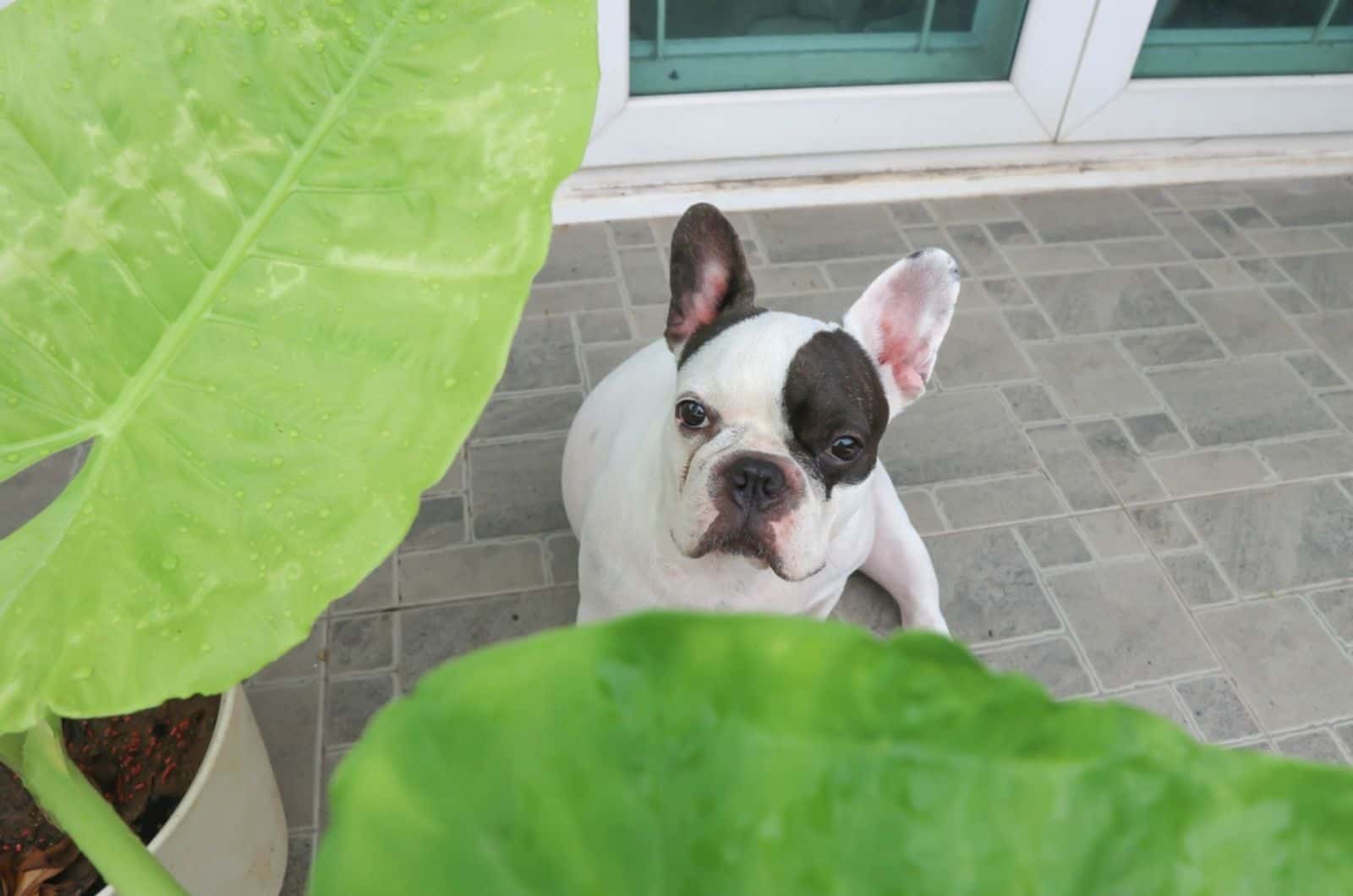
Toxic components: Insoluble calcium oxalates, saponin
Elephant’s ear also contains non-dog-friendly components that cause weird mouth and throat sensations, change of tongue color, drooling, and breathing troubles.
But if your pup decides to rub up against this plant, they can also experience some serious skin irritation and itchiness.
Luckily, this plant tastes awful and our dogs won’t feel the need to continue munching on it.
10. English Ivy (Hedera Helix)

Toxic components: saponin
The berries of the English Ivy plant are more toxic than the leaves, and can cause serious harm if ingested by our canine companions.
As a main culprit of poisoning, saponin causes all sorts of unpleasant symptoms in dogs. (4) If ingested in large amounts, it can lead to vomiting, diarrhea, and even neurological symptoms like paralysis, seizures, and convulsions.
11. Golden Pothos (Epipremnum Aureum)
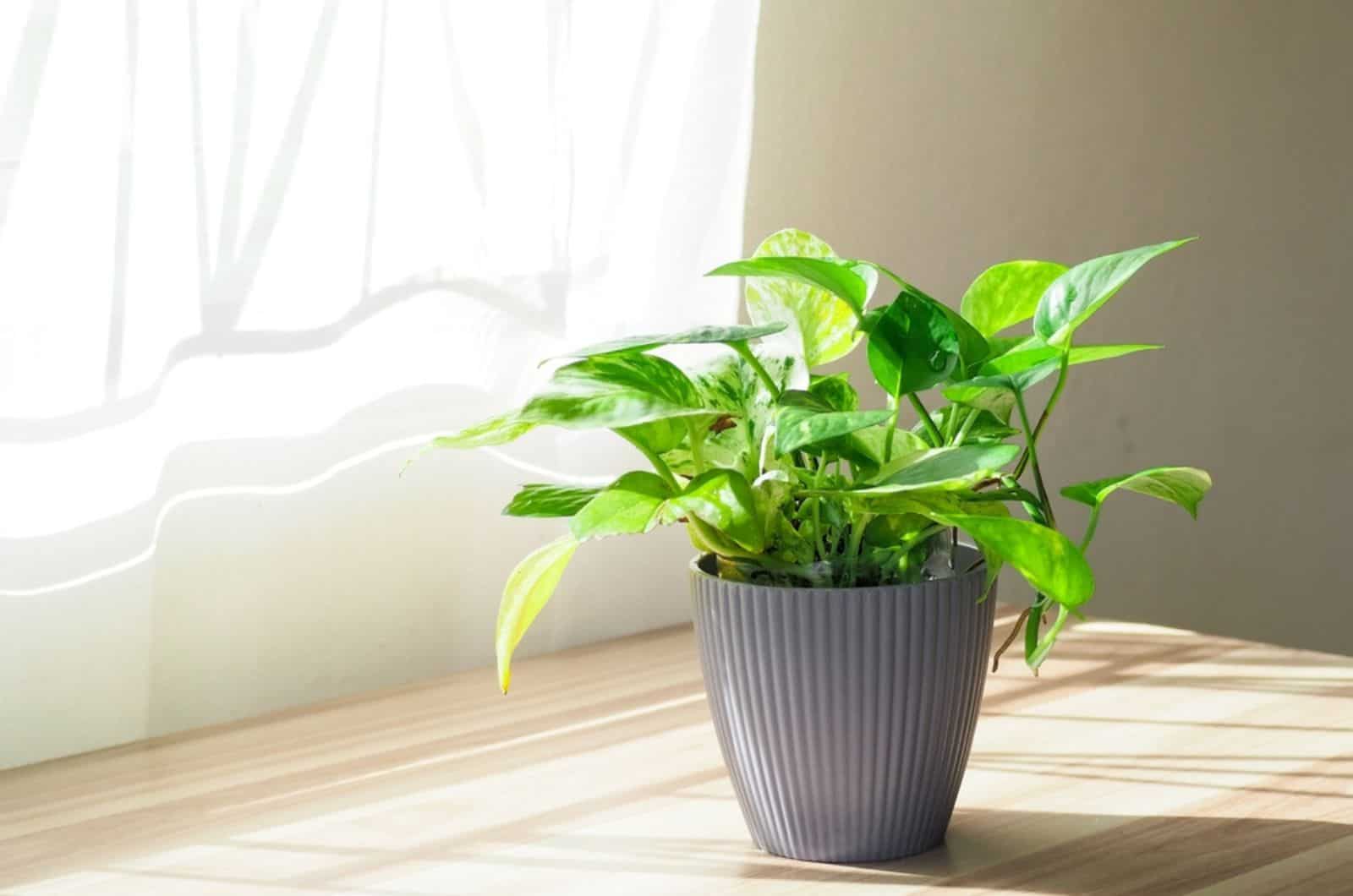
Toxic components: calcium oxalate
The dangers of Golden Pothos lie in the plant’s sap. If it comes to contact with your pup’s skin, it may cause serious irritation, redness and heat. Imagine how it feels like when your dog chews and/or ingests it!
In fact, the burning sensation and irritation may cause bumps and scabs to form around the dog’s mouth.
12. Hemlock (Conium Maculatum)
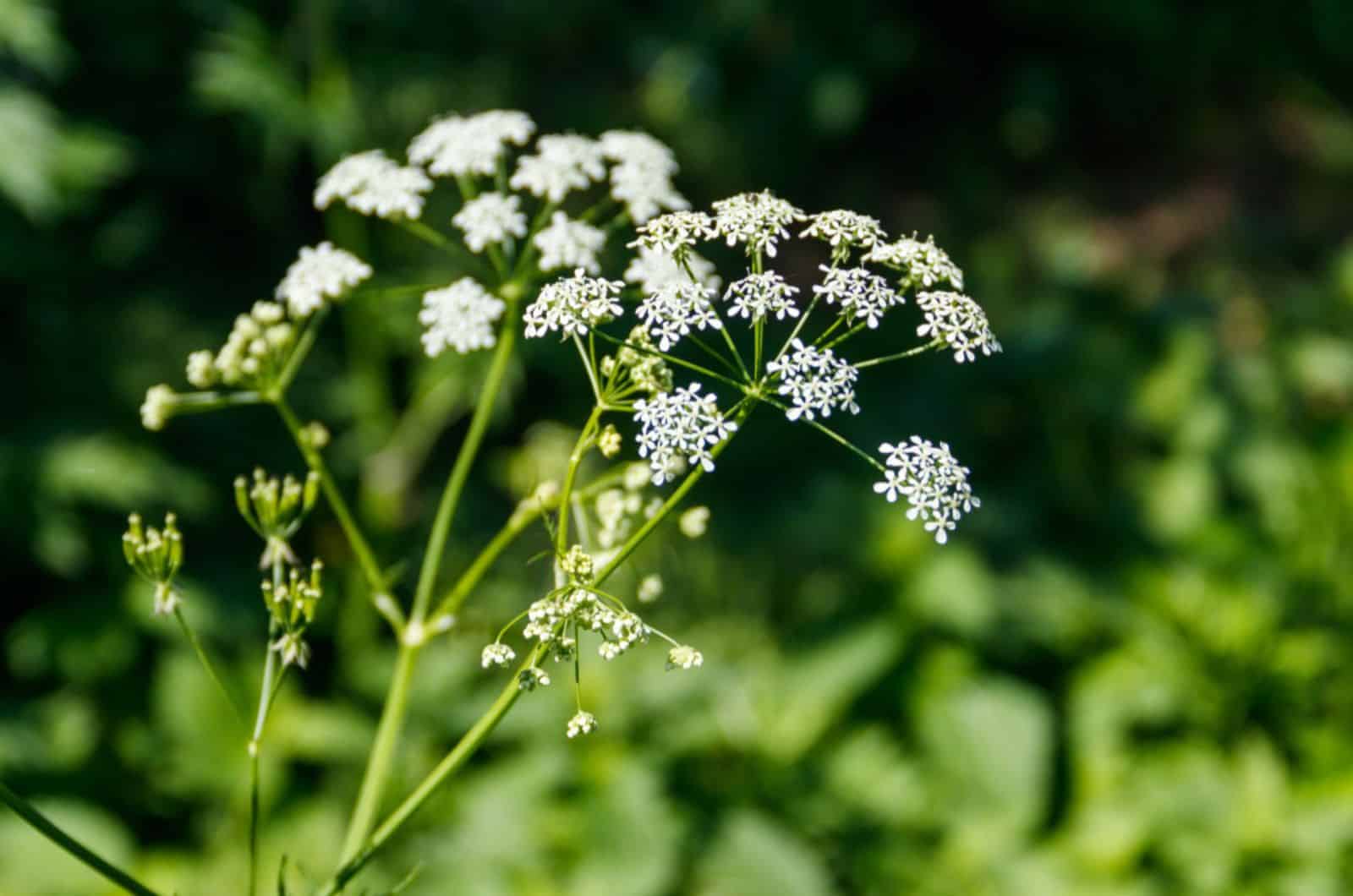
Toxic components: alkaloids, coniine, conhydrine
Hemlock is a toxic member of the carrot family, so it can be easy to mistake for other, non-toxic plants. What’s interesting is that the amount of its toxin tends to be higher when this plant is exposed to the sun.
If a dog ingests the Conium Maculatum plant in large amounts, symptoms such as tremors and vomiting may start appearing as early as 20 minutes.
13. Hibiscus (Malvaceae)
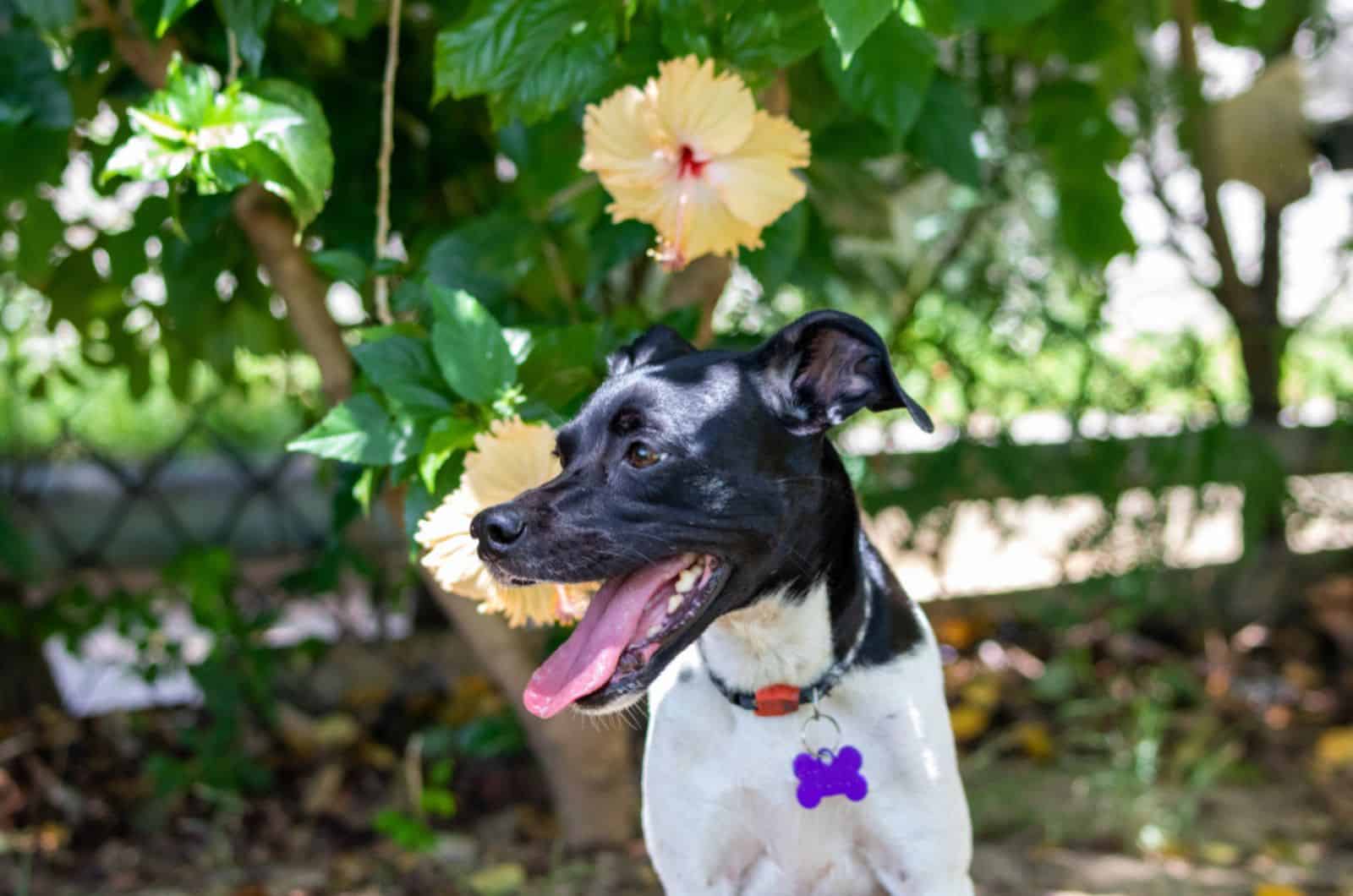
Toxic components: anthocyanin, asparagine, oxalic acid
Hibiscus might be a beautiful flower, but it contains toxic substances that, in large amounts, can cause gastrointestinal upset in dogs. All parts of this plant are poisonous, but the most dangerous part is the bulb.
If your pup decides to chow down on some Hibiscus, they can experience symptoms like vomiting and diarrhea.
Some varieties of Hibiscus can also contain a substance called oxalic acid, which can cause pale gums and blood in urine as symptoms of kidney failure.
14. Lily Of The Valley (Convallaria Majalis)
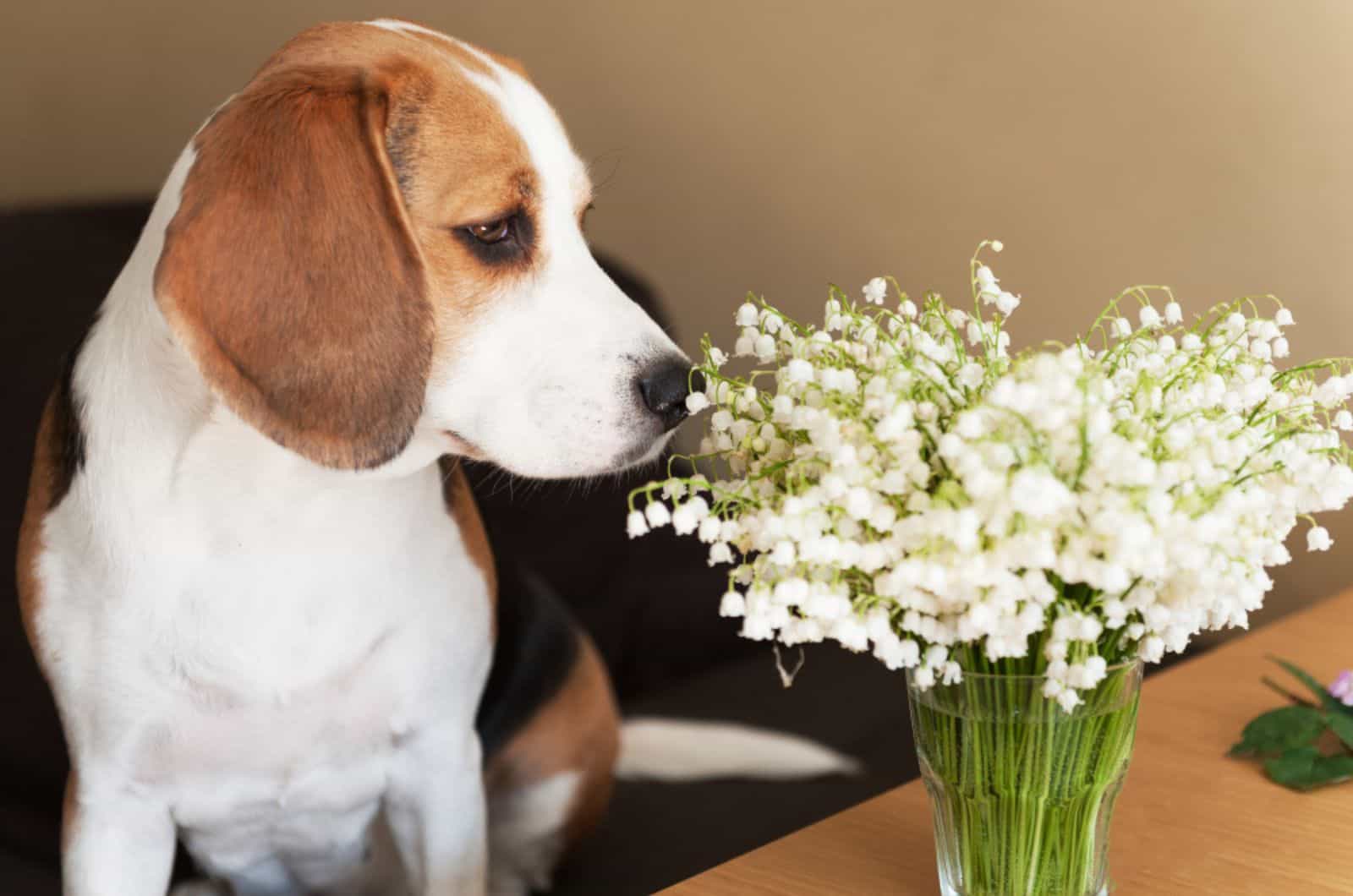
Toxic components: cardenolides, cardiac glycosides, convallarin, saponin
Don’t be fooled by Lily’s beautiful appearance. This plant is so poisonous that if your dog chomps on it, he might start puking his guts out (5). Her toxins go straight for the heart and start wreaking havoc. Your dog may experience heart palpitations, and feeling dizzy and disoriented.
In extreme cases, it could even send them into a full-blown seizure or a coma!
15. Marijuana (Cannabis Sativa)
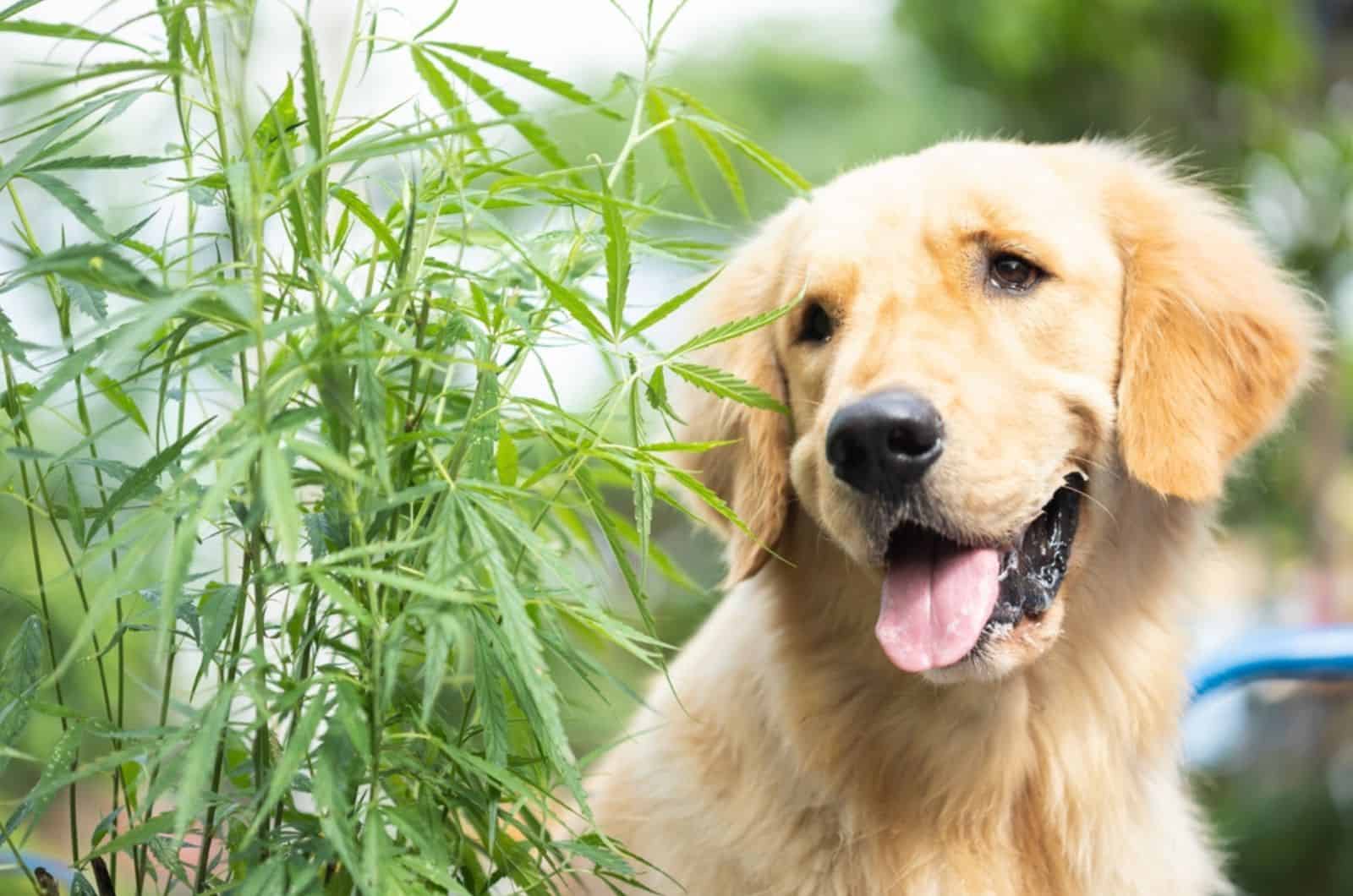
Toxic components: tetrahydrocannabinol
Marijuana is poisonous to dogs, and can have some serious consequences.
You see, THC, the active ingredient in marijuana, affects dogs differently than humans. Only a tiny amount can cause symptoms like lethargy, wobbliness, vomiting, and even seizures.
So, if you can’t get your dog unstoned, make sure to call your vet for help!
16. Milkweed (Asclepias)
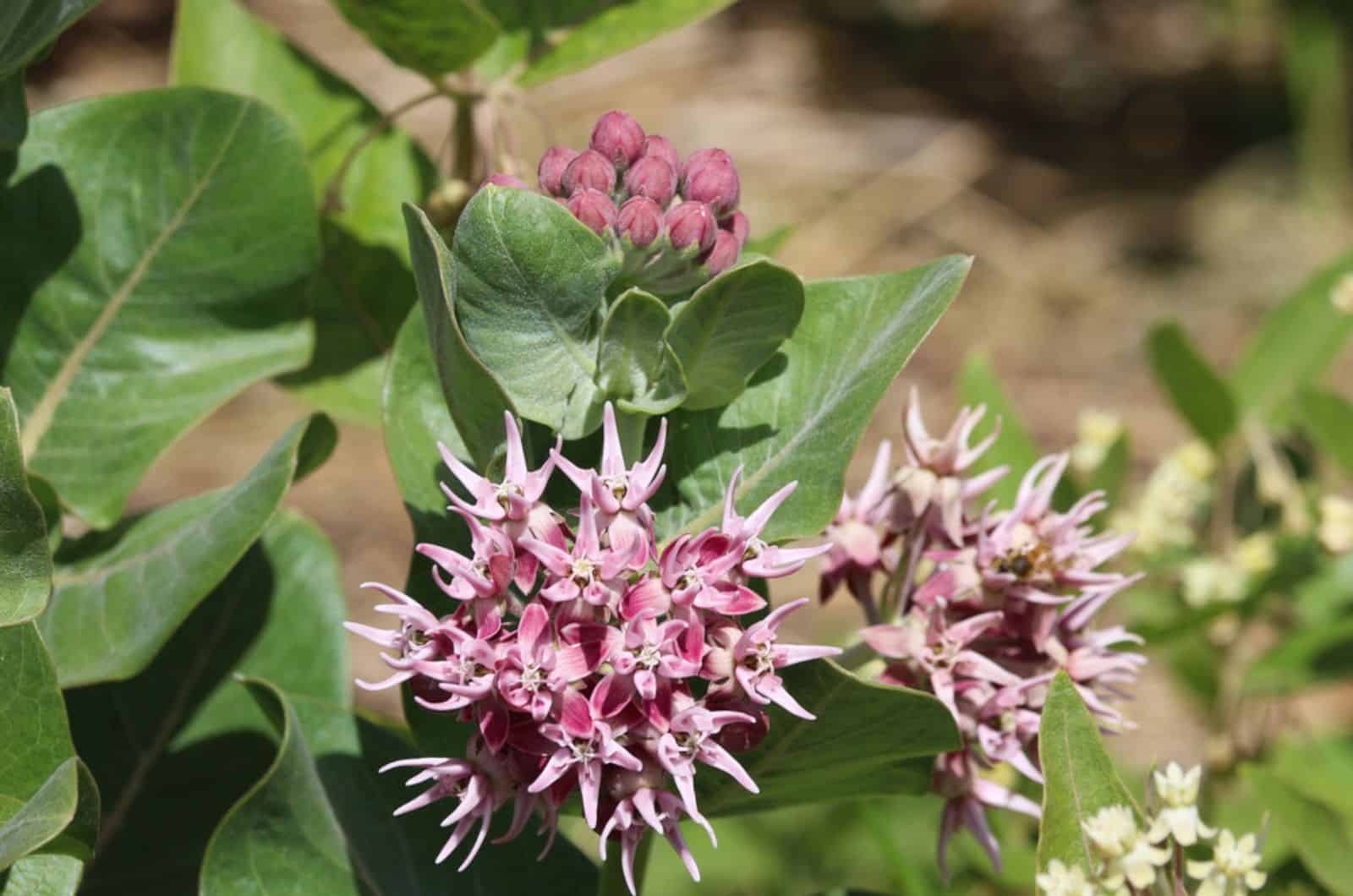
Toxic components: cardiotoxins and neurotoxins
It’s not just the leaves of the milkweed plant that are poisonous – every part of it, from the flowers to the stems, contains cardiac glycoside.
These compounds target the dog’s heart and affect its ability to pump blood properly. This may lead to a wide range of symptoms like throwing up yellow, having explosive diarrhea, and rapid breathing that could indicate heart failure.
17. Mistletoe (Viscum Album)
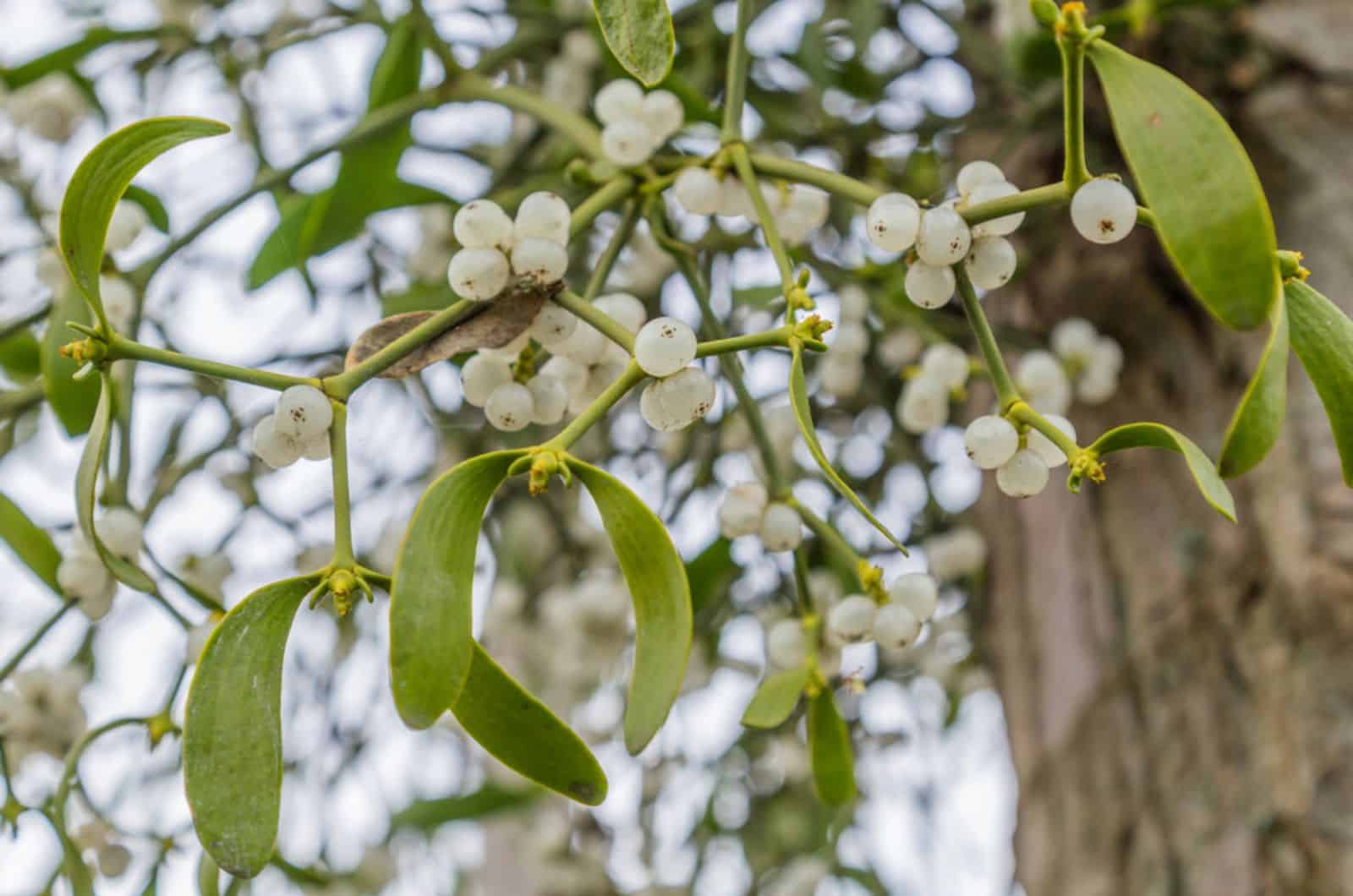
Toxic components: phoratoxin, viscotoxin, viscum
Mistletoe intoxication in dogs is recognized by symptoms such vomiting, diarrhea, abdominal pain, and a slowed heart rate. (6) If ingested in large amounts, it can even cause seizures, collapse, and even death.
The whole plant is poisonous, but if your dog ingests just a few of its berries, things can quickly go south.
18. Morning Glory (Ipomoea)
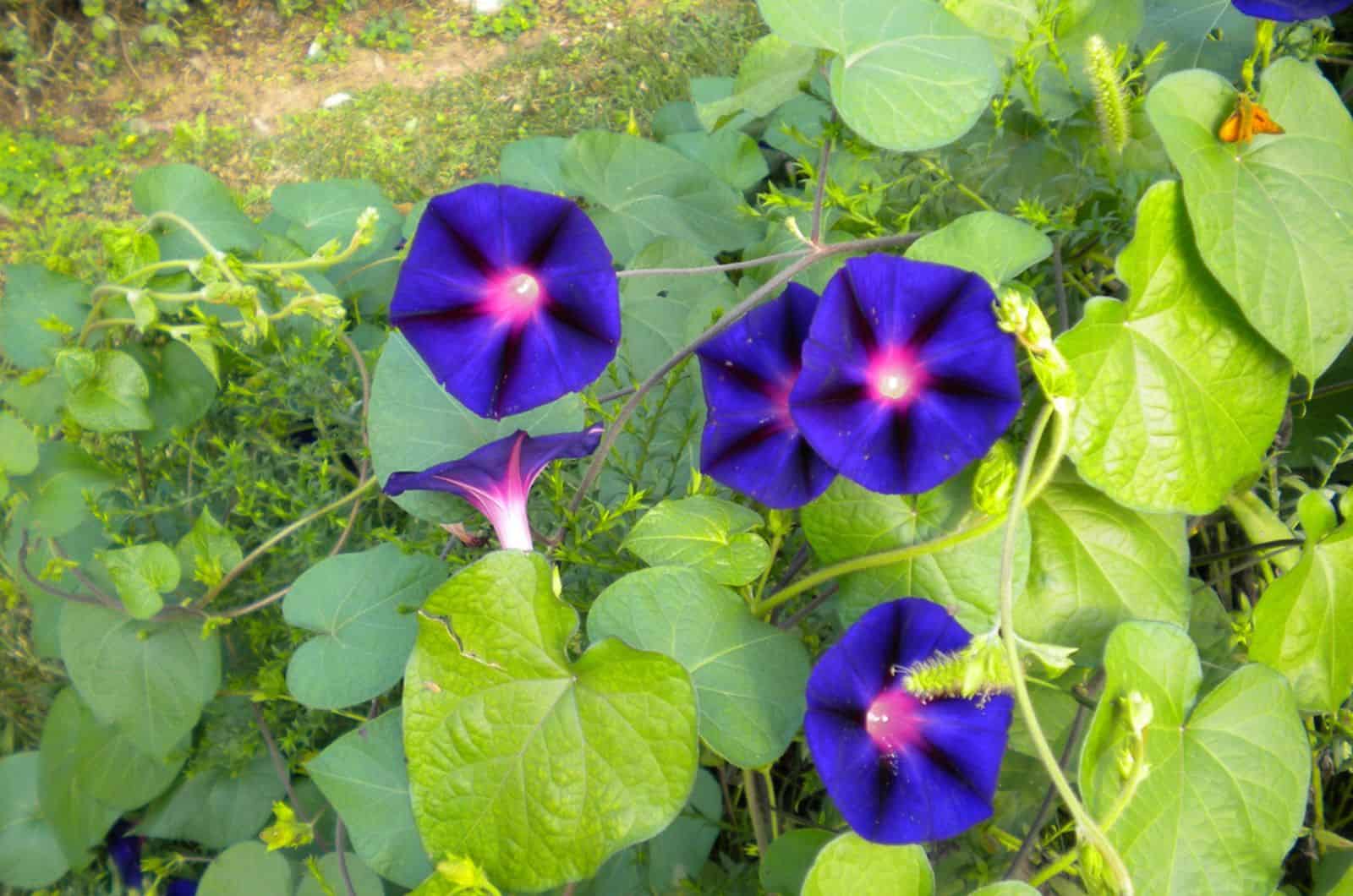
Toxic components: lysergic alkaloids, indole alkaloids
Every part of the Morning Glory plant is poisonous to dogs. It contains toxic substances that induce vomiting, diarrhea, seizures and even death if consumed in large quantities.
So, if you have this plant in your garden or come across it during a walk with your dog, be sure to keep them away from it.
19. Oleander (Nerium Oleander)

Toxic components: digitoxigenin, neriin, oleandrin, oleondroside
If your dog ingests Oleander, you can expect a variety of symptoms. (7) Your dog may act weird, start drooling excessively and have a painful stomach. This plant is not to be fooled around as it can mess with your dog’s heart function, too.
So, if you catch your pup snacking on some Oleander leaves, don’t waste any time – get them to the vet as soon as possible.
20. Sago Palm (Cycas Revoluta)

Toxic components: cycasin
The Sago Palm is highly toxic to dogs! This plant’s toxins can cause severe liver failure in dogs if ingested.
The first symptoms of Sago Palm poisoning in dogs include:
- Vomiting
- Diarrhea
- Abdominal pain
This plant can also affect the nervous system causing weakness, wobbly gait, tremors, or seizures.
21. Snake Plant (Sansevieria Trifasciata)
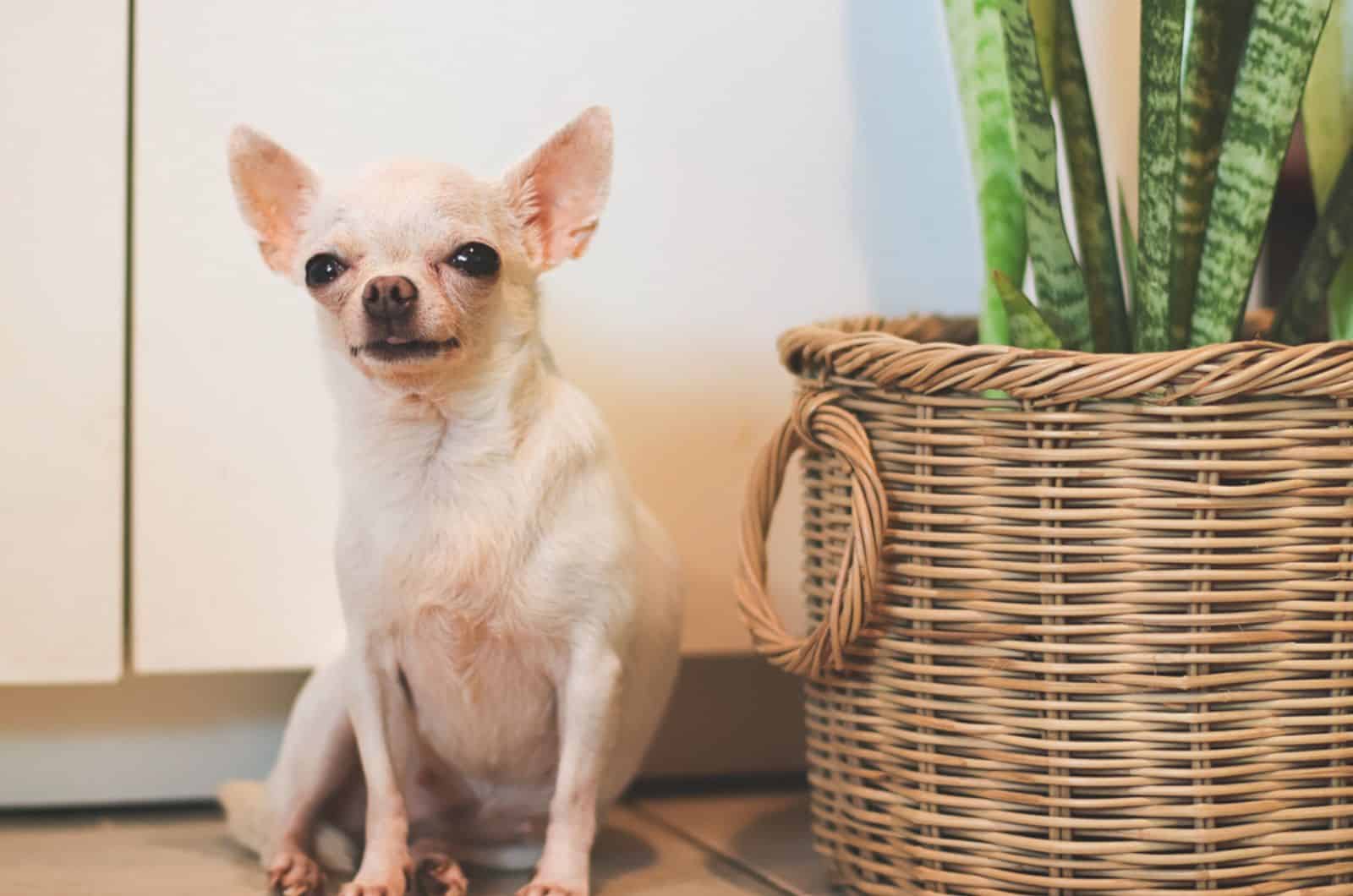
Toxic components: saponins
Although moderately toxic to dogs, if ingested in large amounts, Snake Plant intoxication can be quite troublesome.
From dry heaving, vomiting, diarrhea, and nausea, to drooling, the symptoms can vary depending on the ingested amount of this plant.
22. Thorn Apple Or Jimsonweed (Datura Stramonium)
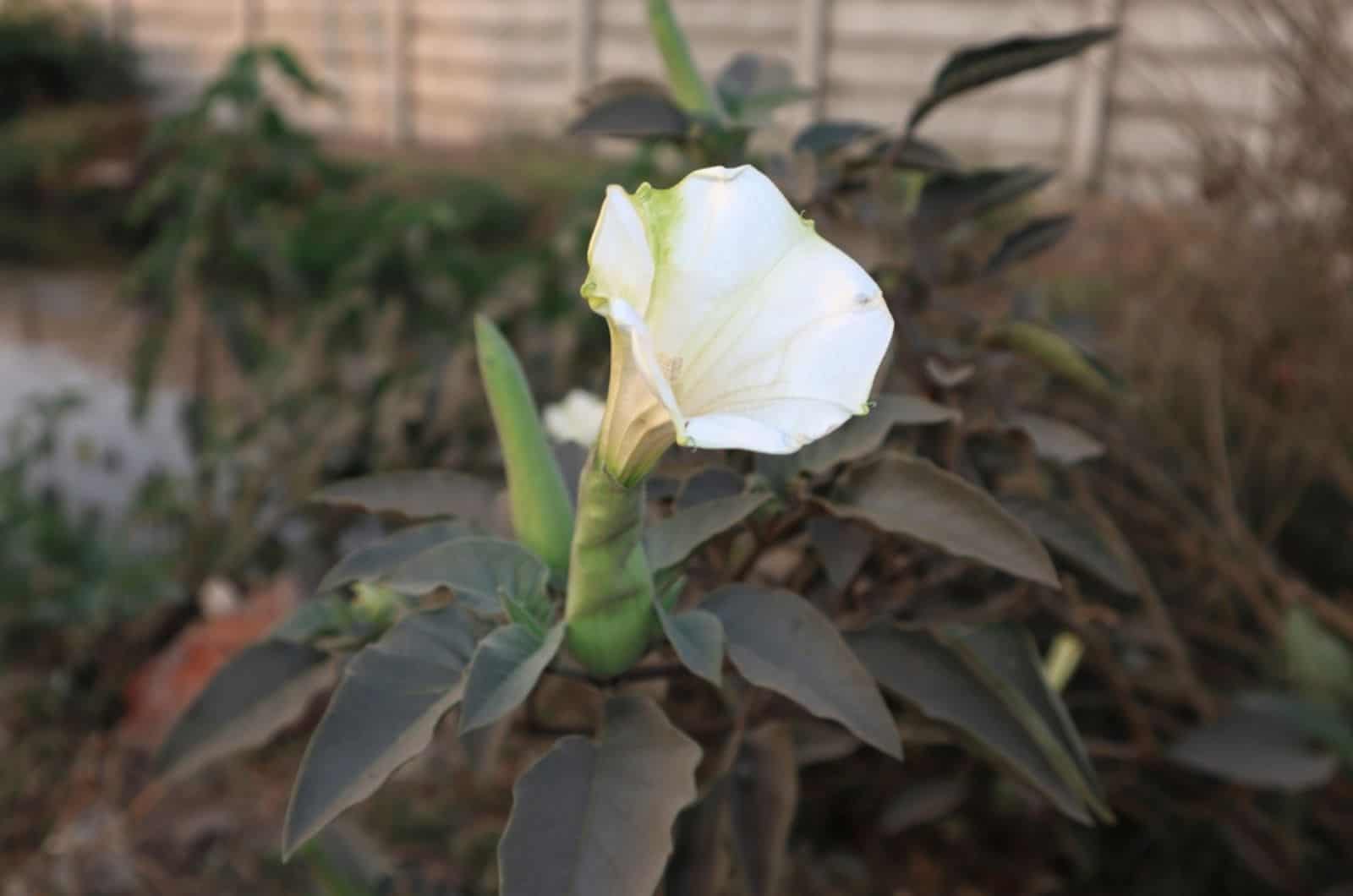
Toxic components: tropane alkaloids
At first, upon ingesting Thorn Apple or Jimsonweed, your dog may have diarrhea but act fine. But, as intoxication progresses, dogs begin to vomit, act confused, exhibit seizure-like signs, and dilated pupils.
Accidental ingestion of this plant can be very dangerous because in severe cases, it can lead to death. (8)
23. Yew (Taxus Spp.)
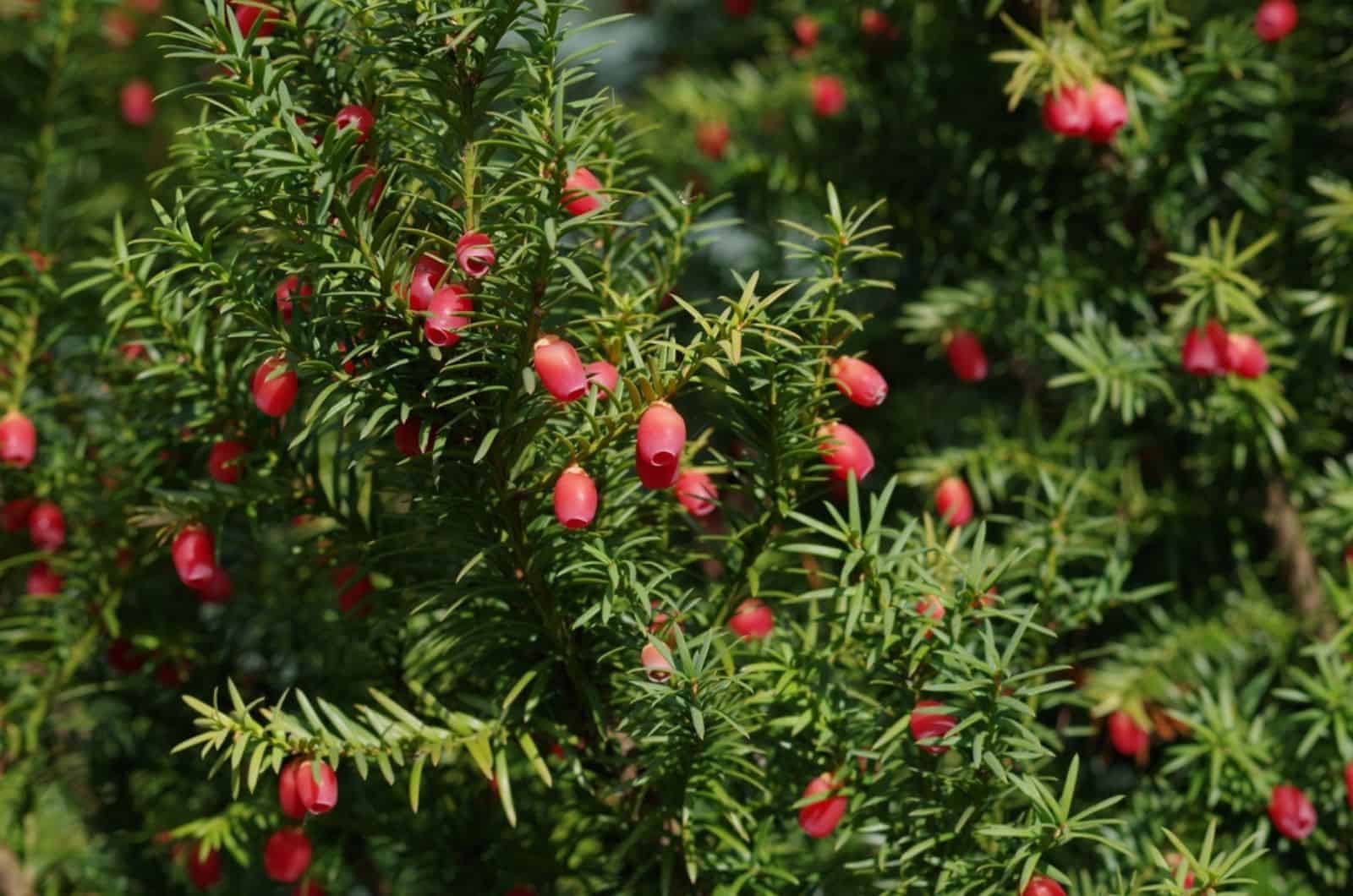
Toxic components: taxine
Whatever you do, do not let your dog near Yew. If ingested, taxine can cause cardiac and nervous system problems in your dog.
Aside from vomiting, diarrhea, and nausea, dogs may experience heart failure, kidney problems, and seizures. This plant has the potential to be lethal. (9)
Final Thoughts
What may look like a harmless garden addition to us can be a deadly temptation for our pups. So, before you add any new plants to your collection, double-check their toxicity status.
Let’s keep our fur balls safe by avoiding plants poisonous to dogs!
References
1. Saponin – role in animal system – veterinary world. (n.d.).
2. Mushroom toxicity: VCA Animal Hospital. Vca. (n.d.).
3. Jansen, S. A., Kleerekooper, I., Hofman, Z. L. M., Kappen, I. F. P. M., Stary-Weinzinger, A., & van der Heyden, M. A. G. (2012, September). Grayanotoxin poisoning: ‘mad honey disease’ and beyond. Cardiovascular toxicology
4. Francis, G., Kerem, Z., Makkar, H. P. S., & Becker, K. (2007, March 9). The biological action of Saponins in Animal Systems: A review: British Journal of Nutrition. Cambridge Core
5. Lily of the Valley. Pet Poison Helpline. (2020, March 3)
6. Mistletoe. Pet Poison Helpline. (2020, March 3)
7. Dangerous beauty: Oleander toxicosis in dogs, horses and more. DVM 360. (n.d.)
8. RA;, T. (n.d.). Accidental datura stramonium poisoning in a dog. Veterinary and human toxicology.
9. Toxicology brief: The dangers of yew ingestion. DVM 360. (n.d.).
